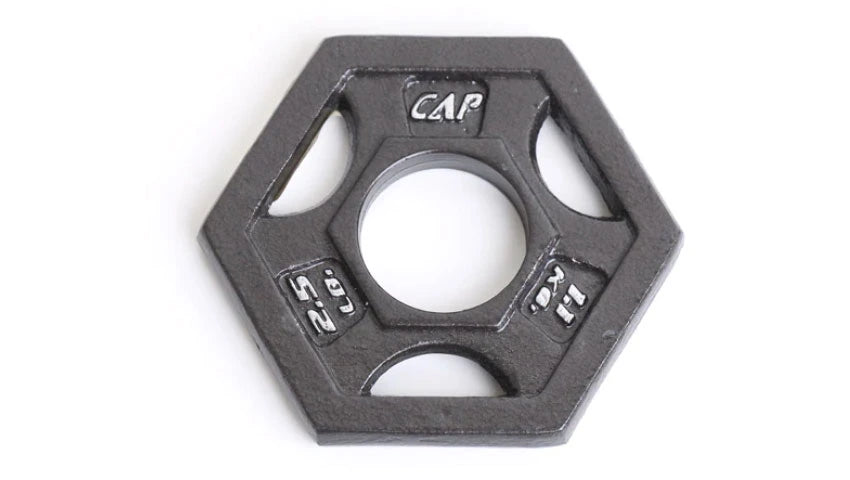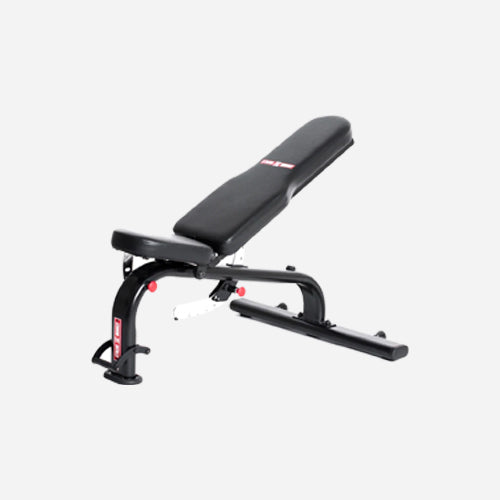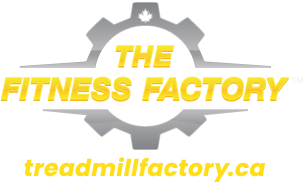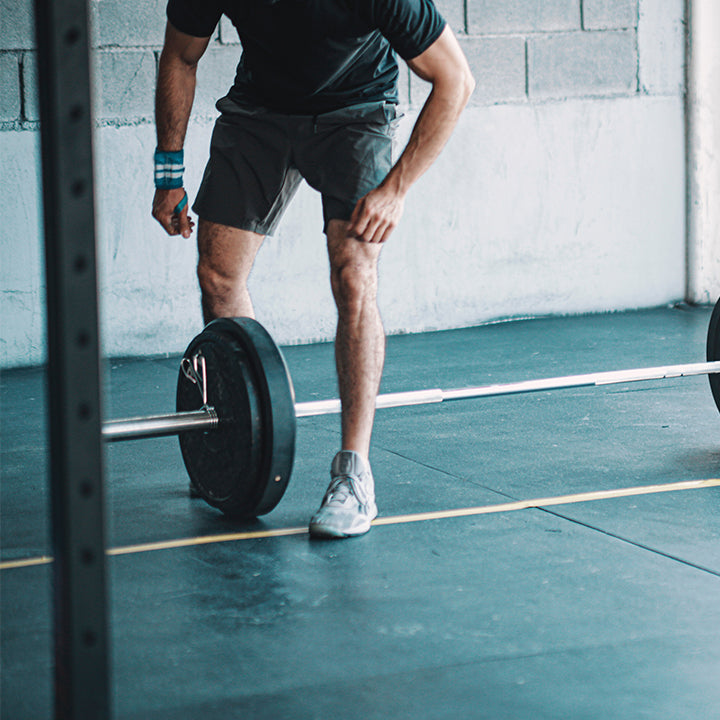Weight plate training offers plenty of health and strength benefits. If you want to burn calories, get lean and muscular, manage your blood sugar levels, and improve your mood, then sturdy, versatile home gym weight and bumper plates are a great option for you.
However, choosing the right plate set can be an overwhelming experience. With so many options, finding the right equipment for your fitness level and workout goals may be a real challenge.
In this comprehensive guide, you'll discover various types of weight plates and their features.
Read on to learn all you need to know to shop confidently and make the best investment for the fitness journey ahead.
What are weight plates, and how do they elevate strength training?
Weight plates are a type of lifting equipment used individually or added to adjustable barbells and plateloaded machines to increase resistance.
If used correctly and consistently, weight plates help you bulk up, burn fat, and improve overall health.
Regular weight plate exercises increase muscle mass, promote building resilient joints and stronger bones, boost metabolism, and improve balance and posture.

Which muscles do weight plates target?
Training with weight plates primarily targets the pectoral muscles, especially during movements like plate presses. Additionally, working with weight and bumper plates isolates triceps and anterior deltoids.
When used without a barbell, weight plates can serve as full-body workout equipment, providing an experience similar to dumbbell or kettlebell training.
Combined movements like squats, rows, pinch carries, halos, and crunch reachers can activate all muscle groups, from biceps to back and abs, improving your grip strength and core stability.

What are the best weight plate exercises?
To exercise with weight and bumper plates, you can attach them to a barbell or use them without additional equipment.
When used with barbells, weight plates are the most effective in compound lifts like squats, deadlifts, bench presses, overhead presses and bent-over rows.
Working out with weight plates without a barbell targets various muscles, requiring minimal equipment. Some of the best movements for this type of training include alternating split squat presses, swing jumps, speed skater twists, jump plate presses, and Russian plate twists.

The different types of weight plates
Standard weight plates are the most popular choice for home gyms, often as stand-alone pieces of training equipment. On the other hand, Olympic discs fit all commercial barbells and plate-loaded machines, which makes them the standard in commercial fitness settings.
Olympic weight plates are further divided into the following subcategories:
- Rubber-coated Olympic plates
- Technique Olympic plates
- Bumper Olympic plates
- Competition Olympic plates
- Fractional Olympic plates
- Powerlifting Olympic plates

Rubber-coated weight plates
Rubber weight plates consist of steel or cast iron core wrapped in rubber coating for protection and longevity. They feature grips that make it easier to pick the equipment off the ground and stack the plates in appropriate storage racks.
Rubber plates are often referred to as non-standard Olympic plates because they fit the Olympic-sized bars but have a smaller than traditional Olympic circumference.
Technique bumper weight plates
Unlike iron or steel weight plates, bumper plates are made entirely of solid rubber. The construction makes this type of gym equipment safe for dropping from a height while performing Olympic lifts.
Technique bumper plates cater to the needs of beginner Olympic lifters and, as the name suggests, help improve their technique. These plates are usually sold in weights of 2.5 kg (5.5 lbs) to 5 kg (11 lbs).

Training bumper weight plates
Training bumper weight plates come in various depths and colours that mark different resistance. Heavier than the technique plates, they’re commonly used in commercial gyms and elite training facilities.
Competition bumper plates
Competition bumper plates are specially calibrated for IWF competition rules, having a minimal margin or error in weight (+0.1% and -0.05%). Thanks to this weight accuracy, professional athletes mostly use competition plates.

Fractional weight plates
Fractional weight plates are suitable lifting equipment that introduces incremental weights of 0.5 kg (1.1 lbs) to 5 kg (11 lbs) on average. These disks can be easily added to increase barbell weight in competitions and technical training programs.

Powerlifting weight plates
Calibrated powerlifting weight plates are commonly made of chromed metal, steel or cast iron. They’re thinner than the other Olympic plates and are used to add more weight to a barbell during a competition or high-level powerlifting training.
The different sizes of weight plates
Standard weight plates have a hole diameter of approximately 1 inch (25.4 mm) and are commonly available in 2.5, 5, 10, 25, 35 and 50 lbs increments. Olympic plates fit on the 2-inch (50.6 mm) barbells and are primarily sold in 2.5, 5, 10, 25, 35, and 45 lbs increments.
Bumper plates are primarily available in 10, 15, 25, 35, 45, and 55 lb increments, while fractional weight plates can also be found in 1 lb (0.5 kg) or less to allow the bar micro-loading.

Weight plates build and materials
Standard and Olympic weight plates are made of different materials: cast iron, steel, plastic, sand, and rubber.
To choose the best material for your training, consider the footing in your workout space. Rubber and urethane coating will protect your wooden floors in case you drop the equipment. Uncoated weight plates are a better choice if you train on concrete floors.
Cast iron and steel weight plates
Cast iron and steel are traditional materials for manufacturing weight plates, guaranteeing strong, solid products that can withstand years of heavy lifting.
Additionally, steel plates are an option to consider if you’re allergic to rubber or urethane.

Rubber weight plates
Rubber weight plates allow a firmer grip and offer better protection for your floors in case of dropping the equipment.
Consequently, they cost more than traditional cast iron and steel alternatives.

Urethane weight plates
Urethane coating makes weight plates durable and customizable so that you can add your logo or colours to the surface.
Urethane is generally harder than rubber, providing more resilience on impact and demonstrating more elastic memory. Durability is urethane’s main selling point, but note that weight plates made of this material offer a less solid grip than the alternatives, tending to slip.

Other weight plate features to consider
Understanding the types, sizes, and materials is paramount when purchasing your first weight plate or weight plate set. That being said, there are two additional features to consider: weight plate shape and handles.
Weight plate shape
Weight plates are traditionally made in a circular shape. However, there are other options on the market you should know about.
Besides the round ones, you can also purchase hexagonal weight plates. Hexagonal weight pales are particularly popular since they add stability due to their specific form.
When using hex weight plates for exercises like deadlifts, pay close attention to how you put them down at the end of each repetition, so you don’t interrupt the movement flow.

Weight plate handles
Weight and bumper plate handles are a feature that allows mounting your equipment to an appropriate barbell. However, this isn’t their only use.
Weight plates with handles are very practical as stand-alone equipment, letting you add more variety to your training with exercises like overhead presses, side bends, squat reaches, halos, lateral raises, front shoulder raises, and more.
How to choose the right weight plates?
When shopping for the weight plates, consider your fitness level, goals, and training space.
For example, the standard cast iron and technique bumper plate can be a good choice if you’re just starting with this equipment. However, the latter would be the best buy if you intend to or fear dropping your barbells when exercising on a wooden floor.

What to look for when purchasing weight plates?
Probably the most important thing to consider when purchasing weight plates is their quality. Put your trust in industry-leading manufacturers and distributors offering good warranties for their gym products.
High-quality materials and rugged construction guarantee your equipment will endure years of heavy workouts. Look for relevant customer reviews to see what you can expect before committing to the purchase.
How to securely store your weight plates?
Weight plates are easy to use and can be neatly stored anywhere in your home gym. They won’t take too much of your space, makings them ideal for personal training areas.
Even though you can place your weight plates just about anywhere, investing in a solid, compact storage rack is advisable. Plate racks and Olympic weight trees keep your space tidy, protecting the floors and equipment when it’s not in use.
When you are ready to work out again, your weight plates will be orderly lined up just where you left them, ready to be safely picked up again.

The benefits of weight plate training
Training with weight plates creates opportunities for activating the entire body through muscle strengthening and endurance training exercises. This type of workout will improve your cardiovascular health, increase energy levels, burn fat, and reduce the risk of depression.
Weight plates are an essential component of any successful weight training program. They are the perfect equipment for athletes who want to intensify their bodybuilding workouts and achieve impressive results without leaving the comfort of their homes.
Using complex gym equipment is not always required to stay healthy and fit. Whether you are a beginner athlete or a seasoned bodybuilder, weight plate training will help you achieve your fitness goals.
How to use weight plates safely and effectively?
When you lift a weight plate or an Olympic barbell off the floor or from a storage rack, always bend from your knees instead of your hips, while keeping your arms bent. This is the proper form for the heavy lifting that will keep you safe from strains and injuries that could ruin your workout session or lead to long-lasting back health complications.

Common mistakes to avoid when using weight plates
The enthusiasm you bring to weight plate training will help you see progress fast, but make sure to avoid the pitfalls beginner weightlifters often face: improper form, lack of warm-up, over- or under-training, and failing to work out with dedication and consistency.
1. Using improper form
The proper form is essential for injury-free, productive weightlifting workouts. Using the wrong weight plate can result in serious injury. The most common type of injury is a sprained ankle, which can occur when the weight plate slips off the barbell and lands on the floor. This can happen if the weight plate is not securely fastened to the barbell or if it is not the correct size for the barbell. Other injuries that can occur include strains, fractures, and bruising. Using the wrong weight plate can also damage equipment, such as the barbell itself. When choosing a weight plate, be sure to select one that is the correct size and that is securely fastened to the barbell. Doing so will help to prevent injuries and damage to equipment.
2. Neglecting warm-up
Engaging in weightlifting movements without preparation can do more harm than good. Always prepare for weight plate exercises by doing the warm-up designed to brace your muscles, knees, and bones for the upcoming pressure.
Cardio exercises, low-intensity jogging, and movements like jumping jacks, squats, push-ups and lunges will warm up your body, increasing the range of motion and lowering the chance of workout-related injury.
3. Overtraining or exercising too often
Pushing yourself over the limit can cause permanent changes in your muscles and bones. While your body is still warm, you might not feel the strain fully. However, by the time you’ve had the chance to cool down, it may already be too late to reverse the damage.
Start slowly and patiently work your way up to make sure your training is effective and safe in the long run.
4. Training too light or too rarely
Staying safe during lifting exercises is crucial, but if you want to see progress, you’ll have to slightly increase resistance during each consecutive training session. When a movement becomes effortless to execute, consider adding more weight to burn extra fat and stimulate muscle growth.
5. Not following a routine
Weightlifting won’t get you the results you want overnight. This type of training requires patience, a clear-cut plan, and unyielding discipline. To make the most of your hard work, design a routine to help you achieve your goals and stick to it.
Consistency and proper form are key. Don’t let impatience or a temporary lack of motivation bring you down. Rain or shine, follow your fitness regime to the letter to guarantee it pays off.
FAQ
How to choose a weight plate?
The best weight plate should fit your fitness level, workout goals, and training environment. Before purchase, consider features like weight increments, materials, product warranty, and manufacturer reputation.
What kind of weight plates are best?
The best weight plates are sturdy, have minimal to no bounce, fit the barbell correctly, and are made of high-quality materials resistant to wear and tear. Choose among different designs while considering your flooring and desired training model.
What are weight plates good for?
Weight plate training is excellent for targeting different muscle groups and building mass, speeding up the metabolism, and improving balance and core strength. Weight plates are easy to use and store, occupying almost no space, making them ideal for home and garage gym workouts.
Do weight plates fit all bars?
Not all weight plates fit every barbell. Standard weight plates have a 1-inch (25.4 mm) hole diameter, while the Olympic plates fit the 2-inch (50.6 mm) bars. Consider the equipment features before purchasing gym products to ensure you have the plates and barbells that work with one another.
Why do metal plates feel heavier?
With high-quality steel and cast iron weights, the deviations in heaviness are minimal because these weights are precisely calibrated. However, cheap rubber weights can be very inaccurate. Also, metal weights are often prone to rust, which can make them slightly heavier over time.
Why are Olympic weight plates better than standard?
Olympic weights are more stable and safer than standard ones during loading, thanks to their thickness and heaviness on the ends. Additionally, Olympic weight plates became the standard in commercial fitness environments because they fit most barbells and plate-loaded machines.
What size weight bar should I use?
If you are lifting while using a power rack, squat rack or bench press, go for the 7-feet barbell. Female weightlifters often prefer 6-feet barbells that provide the same shaft width but have 6 inches shorter loadable sleeve space than the 7-feet bars. If you lift without a rack, a 5-feet or 6-feet barbell is likely the right choice.
What’s the difference between bumper plates and weight plates?
While iron and steel weight plates are made of solid metal, sometimes coated with rubber or urethane, bumper plates are made entirely of solid rubber. Also, unlike standard weight plates with unique weights and corresponding diameters, bumper plates all feature a uniform diameter.
Best weight plates for your home gym
Beginners and weightlifting champions worldwide use weight and bumper plates to achieve desired silhouettes and top-level performances. Proper form, consistency, and regular weight increases guarantee significant muscular, strength, athletic, and hormonal gains.
The Treadmill Factory offers an assortment of weight plates for effective strength training at home. Our weight, bumper, and Olympic plates are designed for a low, dead bounce, protecting you and your surroundings during weightlifting in small spaces like your garage or basement.
Browse our online store to find everything you need for an energizing strength workout at home.





